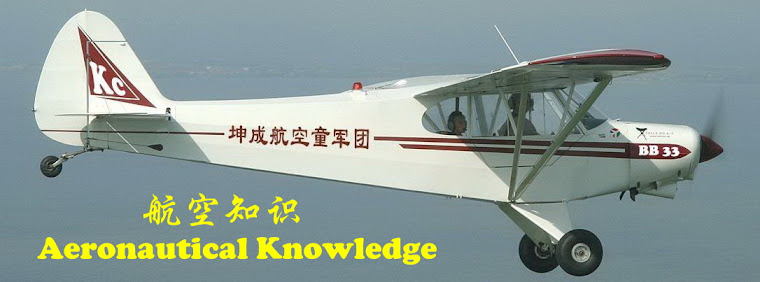 渦輪軸發動機(Turboshaft),是渦輪發動機的一種,利用燃燒室產生的氣流帶動自由渦輪輸出軸功率,而不是噴氣推力。結構上類似於坦克、水翼船等。
渦輪軸發動機(Turboshaft),是渦輪發動機的一種,利用燃燒室產生的氣流帶動自由渦輪輸出軸功率,而不是噴氣推力。結構上類似於坦克、水翼船等。最早由法國引擎製造商Turbomeca于1948年設計製造。
A turboshaft engine is a form of gas turbine which is optimized to produce shaft power, rather than jet thrust. In principle a turboshaft engine is similar to a turbojet, except the former features additional turbine expansion to extract heat energy from the exhaust and convert it into output shaft power.
Turboshaft engines are commonly used in applications which require a sustained high power output, high reliability, small size and light weight. These include helicopters, auxiliary power units, boats and ships, tanks, hovercraft, and sometimes stationary equipment.
Overview
A turboshaft engine contains a gas generator section, consisting of the compressor, combustion chambers with ignitors and fuel nozzles, and one or more stages of turbine. The gas generator's function is to create the hot expanding gases to drive the power section, which consists of more stages of turbines, a gear reduction system, and shaft output. Depending on the design, the engine accessories may be driven either by the gas generator or by the power section.
In most designs the gas generator and power section are mechanically separate so that they may each rotate at different speeds appropriate for the conditions. This is referred to as a free power turbine. A free power turbine can be an extremely useful design feature for vehicles, as it allows the design to forego the weight and cost of complex multi-ratio transmissions and clutches.
The general layout of a turboshaft is similar to that of a turboprop. The main difference is that a turboprop is structurally designed to support the loads created by a rotating propeller, as the propeller is not attached to anything but the engine itself. In contrast, turboshaft engines usually drive a transmission which is not structurally attached to the engine.
The transmission is attached to the vehicle structure and supports the loads created instead of the engine. However, in practice many of the same engines are built in both turboprop and turboshaft versions, with only minor differences.
History
The first true turboshaft engine was built by the French engine firm Turbomeca, led by the founder, Joseph Szydlowski. In 1948 they built the first French-designed turbine engine, the 100shp 782. In 1950 this work was used to develop the larger 280shp Artouste, which was widely used on the Aérospatiale Alouette II and other helicopters.
在带有压气机的涡轮发动机这一类型中,涡轮轴发动机出现得较晚,但已在直升机和垂直/短距起落飞机上得到了广泛的应用。
涡轮轴发动机于1951年12月开始装在直升机上,作第一次飞行。那时它属于涡轮螺桨发动机,并没有自成体系。以后随着直升机在军事和国民经济上使用越来越普遍,涡轮轴发动机才获得独立的地位。
在工作和构造上,涡轮轴发动机同涡轮螺桨发动机根相近。它们都是由涡轮风扇发动机的原理演变而来,只不过后者将风扇变成了螺旋桨,而前者将风扇变成了直升机的旋翼。除此之外,涡轮轴发动机也有自己的特点:它一般装有自由涡轮(即不带动压气机,专为输出功率用的涡轮),而且主要用在直升机和垂直/短距起落飞机上。
在构造上,涡轮轴发动机也有进气道、压气机、燃烧室和尾喷管等燃气发生器基本构造,但它一般都装有自由涡轮,如图所示,前面的是两级普通涡轮,它带动压气机,维持发动机工作,后面的二级是自由涡轮,燃气在其中作功,通过传动轴专门用来带动直升机的旋翼旋转,使它升空飞行。
此外,从涡轮流出来的燃气,经过尾喷管喷出,可产生一定的推力,由于喷速不大,这种推力很小,如折合为功率,大约仅占总功率的十分之一左右。有时喷速过小,甚至不产生什么推力。为了合理地安排直升机的结构,涡轮轴发动机的喷口,可以向上,向下或向两侧,不象涡轮喷气发动机那样非向后不可。这有利于直升机设计时的总体安排。
涡轮轴发动机是用于直升机的,它与旋翼配合,构成了直升机的动力装置。按照涡轮风扇发动机的理论,从理论上讲,旋翼的直径愈大愈好。同样的核心发动机,产生同样的循环功率,所配合的旋翼直径愈大,则在旋翼上所产生的升力愈大。事实上,由于在能量转换过程中有损失,旋翼也不可能制成无限大,所以,旋翼的直径是有限制的。——般说,通过旋翼的空气流量是通过涡轮轴发动机的空气流量的500-1000倍。
同涡轮轴发动机和直升机常用的另一种动力装置——活塞发动机采相比,涡轮轴发动机的功率重量比要大得多,在2.5以上。而且就发动机所产生的功率来说,涡轮轴发动机也大得多,目前使用中的涡轮轴发动机所产生的功率,最高可达6000马力甚至10000马力,活塞发动则相差很远。
在经济性上,涡轮轴发动机的耗油率略高于最好的活塞式发动机,但它所用的航空煤油要比前者所用的汽油便宜,这在一定程度上得到了弥补。当然,涡轮轴发动机也有其不足之处。它制造比较困难,制造成本也较高。特别是由于旋翼的转速更低,它需要比涡轮螺旋桨发动机更重更大的减速齿轮系统,有时它的重量竟占发动机总重量一半以上。


